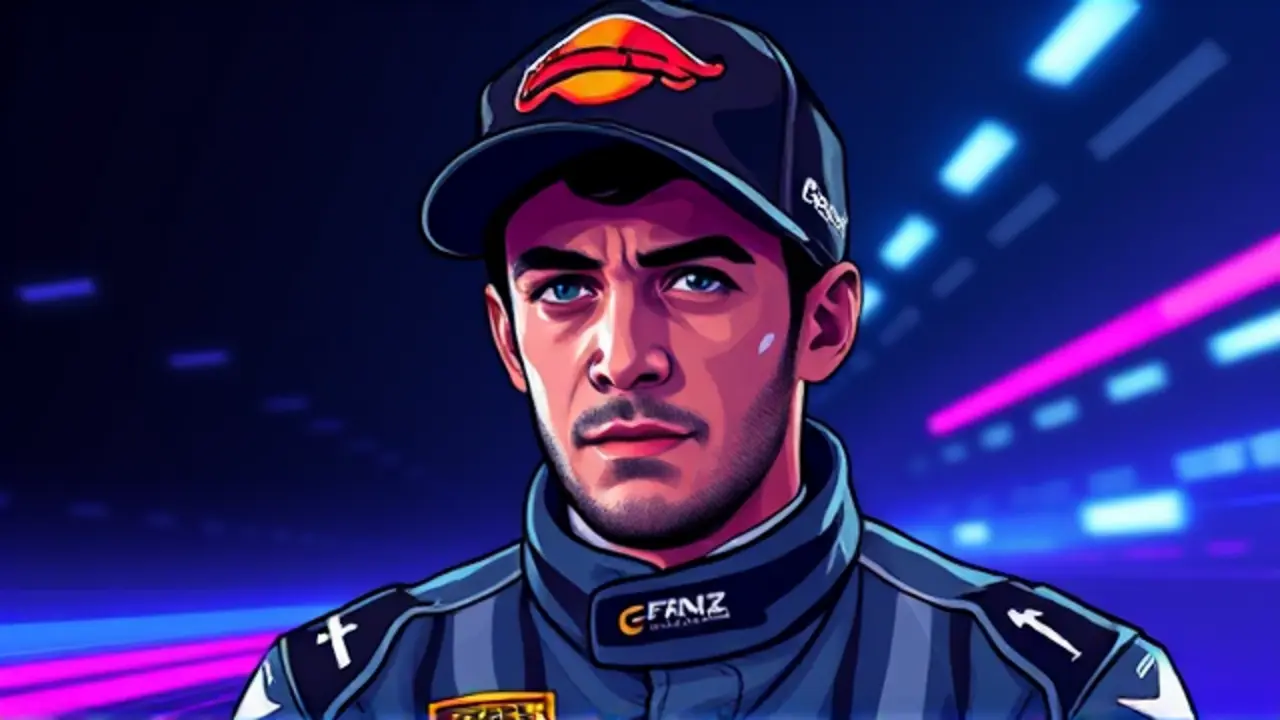Carlos Sainz says he dislikes walking in the paddock while working.
Carlos Sainz, the steely-eyed Spaniard now piloting for Williams, has peeled back the curtain on his paddock persona, revealing a mindset more akin to a grandmaster entering a championship chess match than a celebrity athlete at a social gathering. His admission that he's perceived as one of the most serious and least friendly drivers during a race weekend isn't an apology; it's a declaration of professional intent.In the high-stakes, pressure-cooker environment of a Formula 1 Grand Prix, where milliseconds are currencies and mental focus is the ultimate asset, Sainz's deliberate isolation is a strategic masterclass. He contrasts the modern paddock, a buzzing metropolis of scooters and bicycles necessary for navigating the expanded team compounds, with the more subdued atmosphere of a decade or two ago.While he appreciates the current energy, he issues a poignant plea for understanding: when he's marching from the engineering debrief to the garage for a last-minute setup change, or power-walking to a live television pen, he is not a tourist attraction but a craftsman at his workbench. The constant requests for selfies, while flattering, become distractions, intrusions into a carefully constructed mental fortress where he visualizes braking points, rehearses race starts, and manages the immense cognitive load of piloting a multimillion-dollar machine at suicidal speeds.His mother's gentle chiding to 'smile more' highlights the very dichotomy at the heart of modern F1 stardom—the tension between the accessible, media-friendly hero the fans crave and the ruthless, hyper-focused competitor required to succeed. This isn't mere petulance; it's a performance ritual.Think of Michael Jordan's legendary 'Lock-In' before a Game 7, or Kobe Bryant's infamous 'Mamba Mentality' that saw him block out all external noise. Sainz is operating in the same realm.His desire to isolate, particularly on the electrically charged Sunday of the race, is a conscious effort to channel that same singular intensity. The paddock on race day transforms into a 'mad place,' a circus of sponsors, celebrities, and frantic media, and for a driver like Sainz, whose success hinges on absolute precision, finding a quiet corner to 'be alone with his thoughts' is as crucial as the perfect tire pressure.This approach offers a fascinating counterpoint to other driver personalities on the grid. Where a Daniel Ricciardo might thrive on the crowd's energy, using it to fuel his overtly exuberant style, Sainz represents the other end of the spectrum—the calculating, methodical technician for whom any external stimulus is potential interference.His journey, from the Ferrari pressure cooker to the rebuilding project at Williams, demands this even more. At Williams, every point scored is a hard-fought victory, a testament to out-driving the car's inherent limitations, a task that requires every ounce of concentration he can muster. His candid explanation is more than a quirky personality trait; it's a masterclass in the psychology of elite performance, a reminder that behind the glamour and the glory, these are athletes engaged in a brutal mental war, and for Carlos Sainz, walking through the paddock with a scowl isn't a sign of unfriendliness—it's the face of a man going to battle.
Latest News
The narrative surrounding Igor Larionov Jr.
1 day ago0 comments
The perennial debate over foreign player quotas in domestic football leagues has once again ignited in Russia, with Sports Minister Mikhail Degtyarev
1 day ago0 comments
The narrative surrounding the KHL's newest geographic oddity, the Shanghai-based club now operating out of Saint Petersburg's SKA Arena, was supposed to be one
1 day ago0 comments
The welterweight division just got a whole lot more interesting with the official booking of Sean Brady versus Michael Morales for UFC 322 on November 16, a
1 day ago0 comments
The beautiful game, so often a theater of raw passion and tactical genius, was once again overshadowed by the specter of contentious officiating, a narrative
1 day ago0 comments
In the chaotic theatre of global sport, where human drama and institutional fallibility often overshadow the actual competition, a week of remarkable stories
1 day ago0 comments
Former Formula 1 driver Johnny Herbert has thrown a crucial caution flag on the hype train surrounding Isack Hadjar, firmly stating that Red Bull should resist
1 day ago0 comments
In a powerful testament to the unifying spirit of athletics, Hong Kong is poised to become a vibrant stage for the upcoming National Games, with plans for a
1 day ago0 comments
It’s quiet here...Start the conversation by leaving the first comment.
